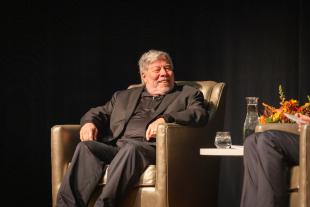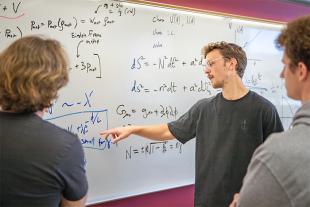Cal Poly’s Efforts Help Planetary Society’s LightSail 2 “Sail on Sunbeams,” Reaching a Milestone

The man who co-created CubeSats at Cal Poly said he’s proud to see the Planetary Society take his technology to new heights with solar sails.
“It is a huge score for CubeSats and for the team at Cal Poly,” said Jordi Puig-Suari, a retired Cal Poly aerospace engineering professor. “It is the beginning of a new way to travel in space.”
The Planetary Society’s LightSail 2 — a CubeSat, or miniature satellite — was prepared with student assistance at Cal Poly’s College of Engineering, which also acted as mission control last week during the deployment of the CubeSat’s Mylar sail. On Wednesday, Aug. 1, the Planetary Society announced that LightSail 2 has successfully raised its orbit in space solely on solar power.
Puig-Suari proposed the CubeSat with Stanford University professor Bob Twiggs in 1999 as a way for students to create spacecraft. Because the CubeSat’s small size made it much less expensive, private businesses, governments and other schools quickly embraced the technology.
LightSail 2 is roughly the size of a loaf of bread. That’s still large enough to carry an 18-foot sail. Once that sail was deployed, navigation was performed autonomously with an on-board algorithm, and LightSail was propelled by photons from the sun.
Previously, spacecraft had to travel with fuel — which eventually runs out, noted Bill Nye, the Planetary Society’s CEO. Solar powered spacecraft can continue much longer, paving the way for traveling much further.
“For me it’s very romantic that you’d be sailing on sunbeams,” Nye said.
Nye first learned of the concept from his former teacher and Planetary Society founder Carl Sagan in the 1970s. This month, Sagan’s concept, which he described to Johnny Carson on “The Tonight Show” in 1976, was proven.
“The community spent decades talking about solar sailing as an academic exercise,” Puig-Suari said. “Carl Sagan would be proud!”
During a press conference, LightSail 2 Program Manager Bruce Betts thanked Cal Poly computer science professor John Bellardo and PolySat systems engineer Michael Fernandez, a physics major, for their help on the project.
Bellardo has been involved with the project since the early design phase of LightSail 1, which performed a test flight in 2015.
“Solar sailing excites me because it enables us to build small spacecraft that can explore our solar system,” said Bellardo, who was responsible for most of the LightSail 2 flight software, primary flight commanding, ground station infrastructure and general spacecraft operation support. “I’m hopeful that a price reduction is correlated with the size reduction — and that this results in being able to send a greater number of satellites to all sorts of different destinations.”
Puig-Suari said the cost reductions afforded by the CubeSats were crucial to LightSail 2. Nye said the crowdfunded LightSail 2 project cost $7 million.
In addition to Bellardo’s work, PolySat also assisted with environmental testing, manufacturing of the P-POD deployer, primary flight computer, and more. Cal Poly’s work on LightSail 2, Bellardo said, furthers its already strong CubeSat reputation, which goes back to Puig-Suari’s invention.
Puig-Suari is now sailing the world with his family — using boat sails instead of solar sails. But a reminder of his impact stood just a few feet from the Planetary Society scientists as they monitored the sail deployment at Cal Poly: The PolySat lab features a life-sized cut-out of Puig-Suari.
“I am so happy with the results from LightSail 2,” Puig-Suari said. “It is a really big deal.”
Now that a mini-satellite prepared at Cal Poly has successfully propelled through space with solar power, Nye has another cosmic goal — and this one is even farther out of this world.
“I would very much like to look for signs of life in my lifetime,” he said.




